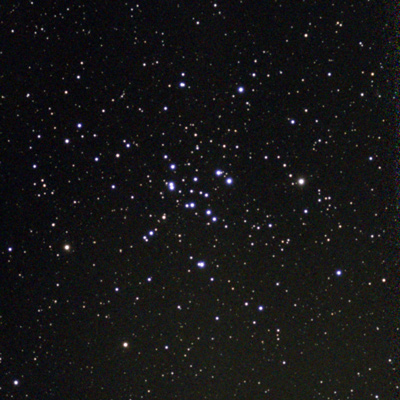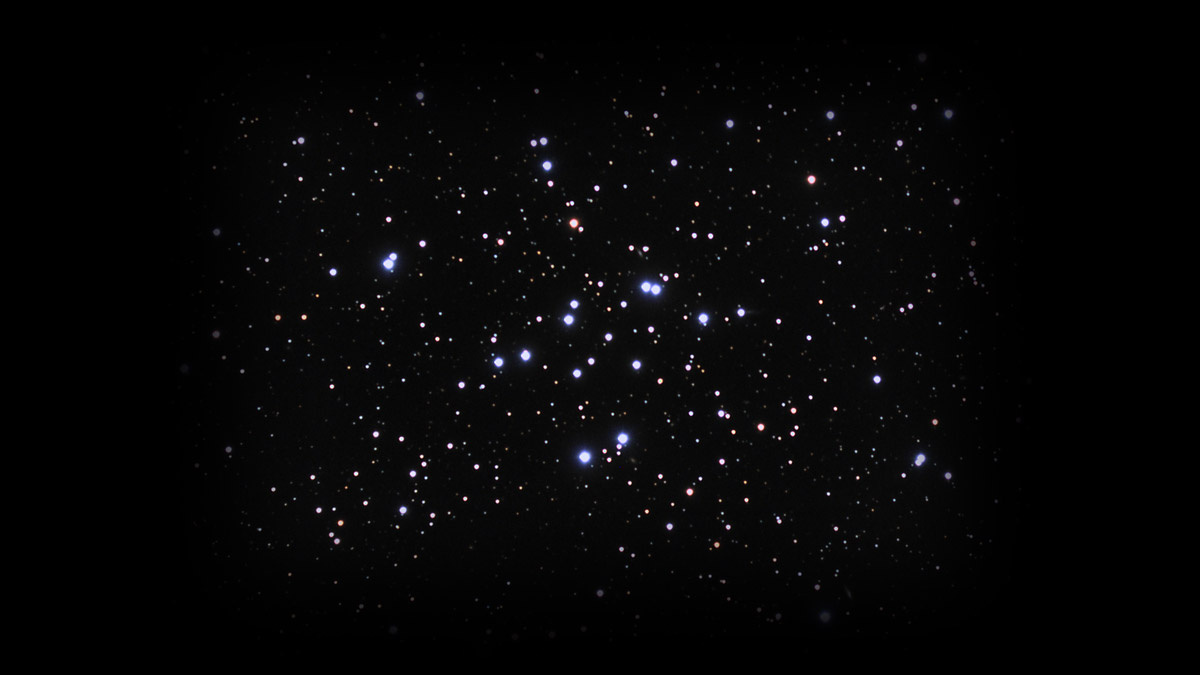Messier 34, also known as Sprial Cluster, is an open cluster in the constellation Perseus. It is best viewed in late autumn through winter.
M34 is an open star cluster with a diameter nearly the size of the full moon. From a dark, moonless site, observers are able to see it with the naked eye. From the suburbs, M34 is a great target for binocular users, and those with telescopes will enjoy seeing a treasure chest of 80-100 stars.
When observing M34, observers will find many stars arranged in pairs. These are optical double stars that capture one’s attention quickly. Also, some skywatchers note that the 20 brightest stars make up three distinct curved arms that radiate from the cluster’s center.
Historically speaking, stargazers since antiquity surely noticed the patch of stars, but it is believed that Italian astronomer Giovanni Battista Hodierna made the first recording before 1654. A century later, the famed astronomer Charles Messier wrote about the cluster, calling it a “cluster of small stars.”
My Observations
| Date | January 28, 2022 |
| Time | 8:00 p.m. |
| Location | Seattle, WA |
| Magnification | 85x |
| Scope | Meade 8″ SCT |
| Eyepiece | 24mm |
| Seeing | Average |
| Transparency | Average |

It is almost two years since I started my observations at the beginning of the pandemic, and I can’t believe I’ve not seen M34 until now. It’s a robust open cluster high overhead tonight, so this is a perfect time of year to view it. Immediately, I notice many of the brighter stars are in pairs. I’m not sure if these are optical or related binaries; nevertheless, I really like this feature of the cluster. I can’t recall another cluster with such bright pairs.

Key Stats
| Constellation | Perseus |
| Best Viewing | Winter |
| Visual Magnitude | +5.2 |
| Absolute Magnitude | -3.3 |
| Distance from Earth | 1,600 ly |
| Diameter | 16 ly |
| Apparent Size | 35 arcmin |
| Milky Way Location | Orion Spur |
| My Viewing Grade | A |
Historical Observations
August 25, 1764 observation by Charles Messier
“Cluster of small stars, between the head of Medusa (Algol) & the left foot of Andromeda, a little below the parallel of Gamma [Andromedae]: with an ordinary telescope of 3 foot one can distinguish the stars.”
Sources and Notes
M38 banner photo by Jim Mazur from http://www.skyledge.net/Messier34.htm and used under the Creative Commons Attribution-Share Alike 4.0 International license.
Charles Messier Observations: SEDS Messier Database
AKA: Messier 34, m34, M 34, NGC 1039
